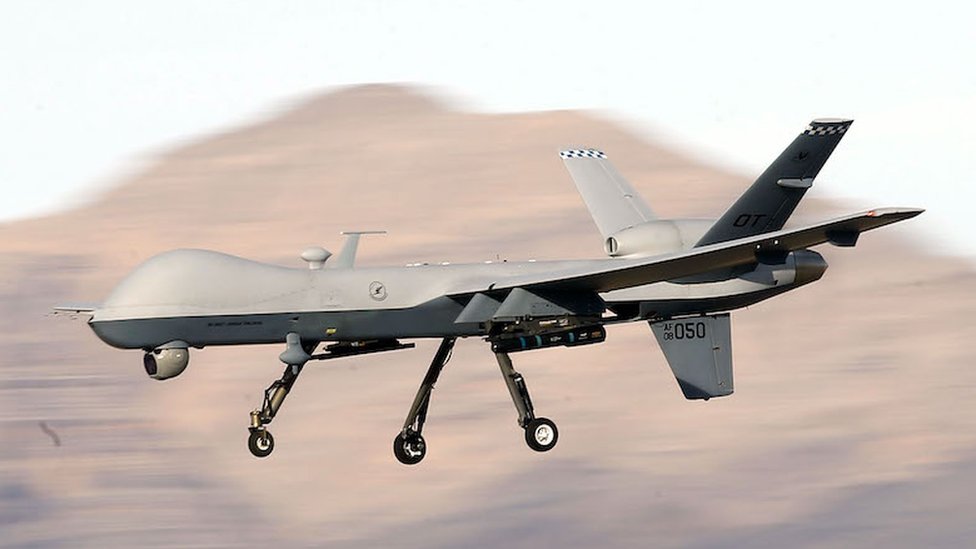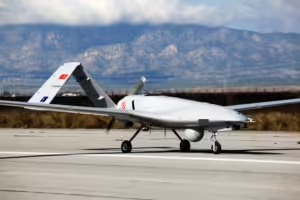
Drones, once a word synonymous with photography , have now quickly become part of war jargon. In this context, drones refer to Unmanned Aerial Vehicles (UAVs). These have rapidly become one of the most commonly used weapons to lock in on specific target sites or, as in the recent cases of India and Pakistan, to even fight new forms of warfare called drone warfare.
Drone Warfare and Asymmetric Combat
From Israel to Ukraine to India, the past year has seen an exponential rise in the use and development of drones. Drone warfare is now a central tactic in the handbook of asymmetric warfare, with countries like India, Russia, and Ukraine heavily investing in acquiring and producing more advanced drone systems.
Drones or UAVs (Unmanned Aerial Vehicles) are objects that do not need a pilot inside them. Instead, they are remotely controlled from ground stations. They are used for reconnaissance and surveillance, pinpoint strikes, and delivery of equipment. What differentiates drones is their smaller size, cost, effectiveness, and lack of personnel risk. Not only can they be mass, produced, but in some cases, they can also be homemade ,as seen in Ukraine’s attacks on Russia, where drones have been built from scratch using FPV (First Person View) technology. These are made everywhere , from high, tech labs to people soldering PCBs in apartment basements.
The Rise of Kamikaze Drones
The recent year has seen a dramatic increase in the use of kamikaze drones or loitering munitions. These are small, backpack, sized drones that go full kamikaze , like the Japanese fighter planes in World War II. Once they reach their target, they attack and self destruct in the process. This eliminates the need for retrieval and makes them cheap and expendable.
The Iranian, made Shahed, 136, used by Russia against Ukraine, is one such example. Due to its portable launch pad and easy assembly, the Shahed can be launched from virtually anywhere. These drones are deployed in massive numbers to overwhelm enemy defense systems.
Another key example is the Bayraktar TB2, a Turkish produced drone that has played a major role in the Ukraine, Russia war and the Azerbaijan, Armenia conflict. It is built using commercially available drone parts, which makes it cost efficient and easy to produce in large numbers.

Categories of Military Drones
So, to divide them into broad categories, the following are the three types of drones:
- Reconnaissance and surveillance drones – like the Israeli Heron 900, used for monitoring enemy areas and identifying target sites, as well as army/military deployment positions.
- Combat drones – drones capable of carrying ammunition like grenades or missiles. Example: Bayraktar TB2, a Turkish, made MALE (Medium Altitude, Long Endurance) drone designed for intelligence, surveillance, and strikes.
- Kamikaze or loitering drones – like the American Switchblade 300, which flies toward its target and explodes on impact.
Innovation, Electronic Warfare, and the Race for Dominance
Countries are now heavily focusing on R&D to improve drone technology, adapting to a constantly evolving landscape. A recent innovation includes fiber optic drones being tested by Russia, these drones address a major challenge in modern drone warfare: electronic jamming.
Traditional drones are usually controlled through radio signals, which are easily jammed by modern electronic warfare systems (used by both Russia and Ukraine). However, fiber optic drones remain connected to their operators using long, thin cables, making them immune to radio jamming or interception.
Top Drone Manufacturers
Some of the largest drone manufacturers in the world include Turkey, China, the US, Israel, Iran, and Ukraine.
India has also joined the game with the Nagastra-1, an indigenous military grade kamikaze drone developed for precision strikes.
The Changing Face of Warfare
The ever changing landscape of war is now being propelled by fast, evolving technology. Where once massive fleets of armies were deployed, we now see swarms of UAVs taking their place. These drones are cost, effective, offer pinpoint precision, and can inflict significant damage all at a lower price than traditional fighter jets.
All these developments are clear evidence of a growing reality:
The future of warfare will be guided by technological change and the real test is which country can build an indigenous, self reliant ecosystem capable of keeping up with this rapid pace.



